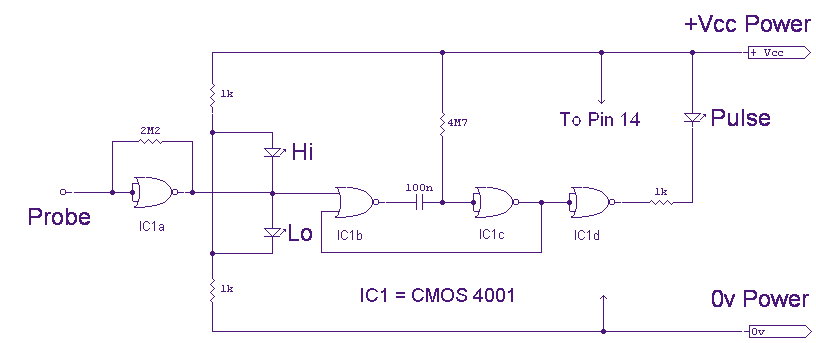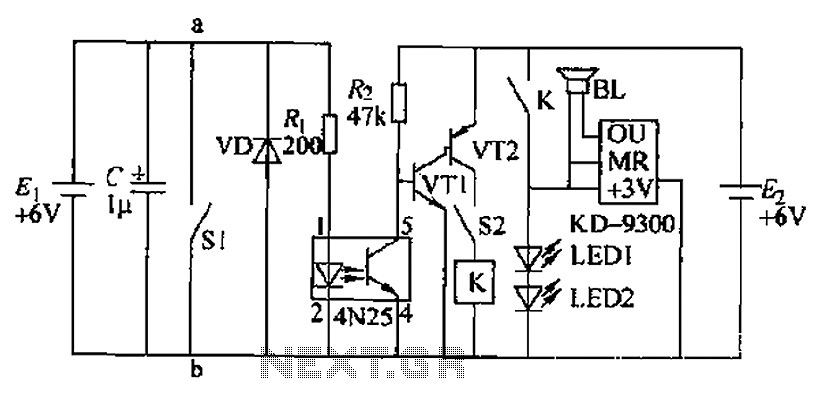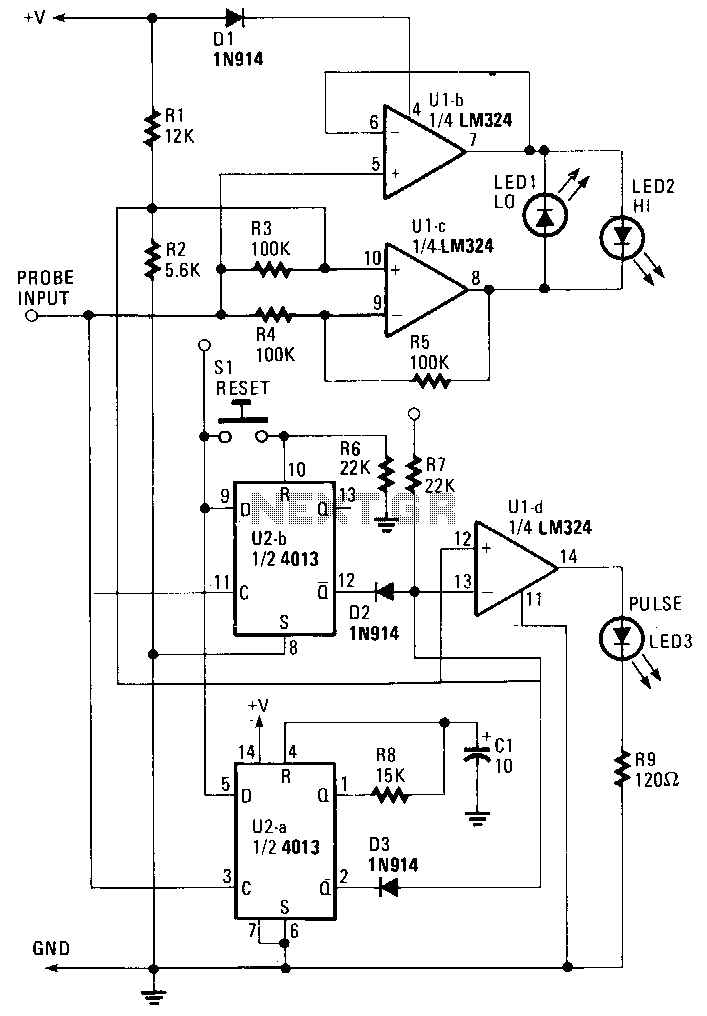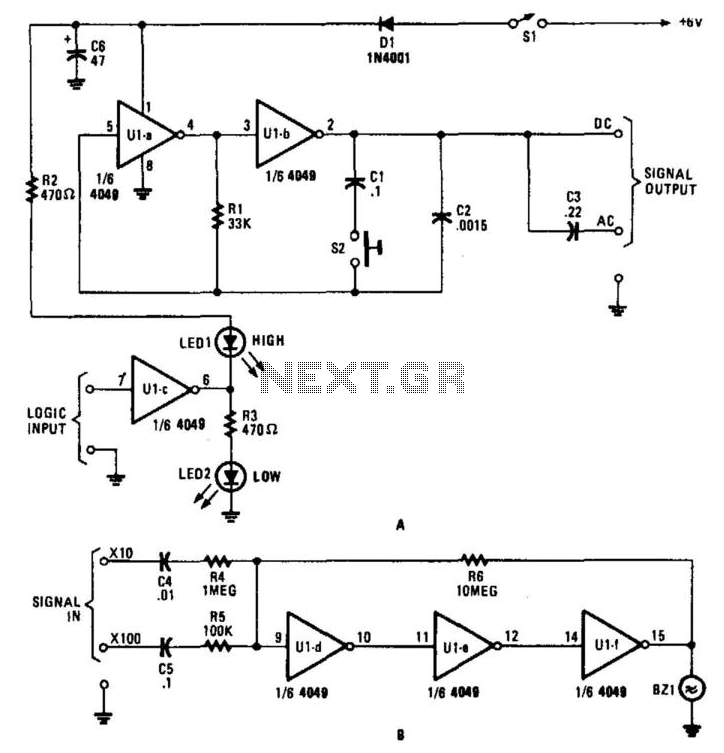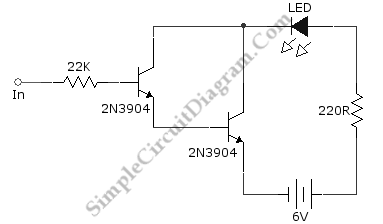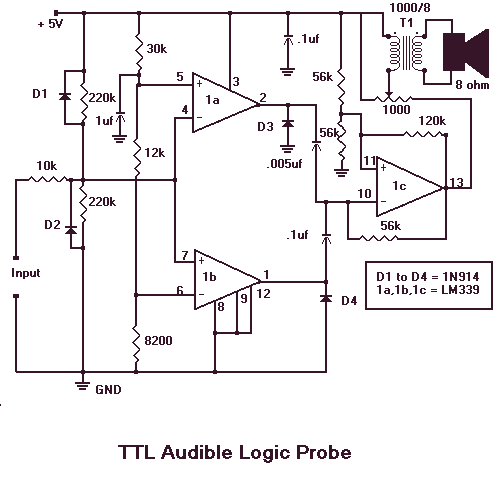
TICK TACK TOE LOGIC
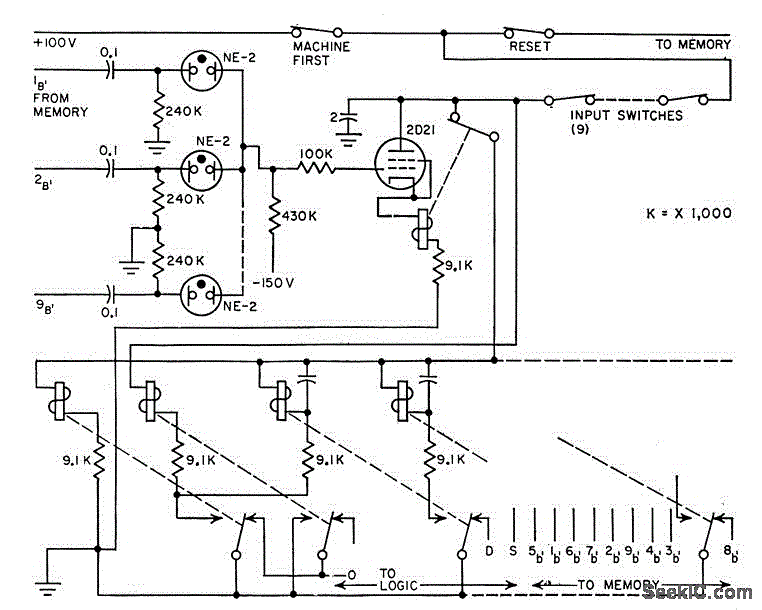
Neon lamps function as diode gates and indicate positions and moves on a game board. The thyratron-relay combination acts as memory, while relays manage the sequence to prevent two successive moves by either player.
Neon lamps are utilized in this circuit as visual indicators, representing the state of each position on the game board. When a player makes a move, the corresponding neon lamp illuminates, providing a clear visual cue of the current game state. The use of thyratrons in conjunction with relays forms a robust memory element that retains the game state and ensures that the sequence of moves adheres to the rules of the game.
The thyratron functions as a switching device that can handle high voltages and currents, making it suitable for this application. It is triggered by the input from the game board, allowing the circuit to remember the last move made by a player. The relay system further enhances this by controlling the flow of current to the neon lamps, ensuring that no player can make two consecutive moves. This is achieved through a carefully designed timing mechanism within the relay system, which enforces the turn-taking rules of the game.
The integration of these components creates a reliable and efficient electronic game board that not only provides an engaging user experience but also demonstrates fundamental principles of electronic logic and memory storage. The design exemplifies the application of basic electronic components in a practical scenario, showcasing their functionality in a game setting.Neon lamps serve as diode gates and indicate positions and moves on game board. Thyratron-relay com bination serves as memory, while relays referee sequence to prevent two successive moves by either player. -C. E. Hendrix and R. B. Purcell, Neon Lamp Logic Gates Play Tick-Tack-Toe, Electronics, 31:25, p 68-69. 🔗 External reference
Neon lamps are utilized in this circuit as visual indicators, representing the state of each position on the game board. When a player makes a move, the corresponding neon lamp illuminates, providing a clear visual cue of the current game state. The use of thyratrons in conjunction with relays forms a robust memory element that retains the game state and ensures that the sequence of moves adheres to the rules of the game.
The thyratron functions as a switching device that can handle high voltages and currents, making it suitable for this application. It is triggered by the input from the game board, allowing the circuit to remember the last move made by a player. The relay system further enhances this by controlling the flow of current to the neon lamps, ensuring that no player can make two consecutive moves. This is achieved through a carefully designed timing mechanism within the relay system, which enforces the turn-taking rules of the game.
The integration of these components creates a reliable and efficient electronic game board that not only provides an engaging user experience but also demonstrates fundamental principles of electronic logic and memory storage. The design exemplifies the application of basic electronic components in a practical scenario, showcasing their functionality in a game setting.Neon lamps serve as diode gates and indicate positions and moves on game board. Thyratron-relay com bination serves as memory, while relays referee sequence to prevent two successive moves by either player. -C. E. Hendrix and R. B. Purcell, Neon Lamp Logic Gates Play Tick-Tack-Toe, Electronics, 31:25, p 68-69. 🔗 External reference
